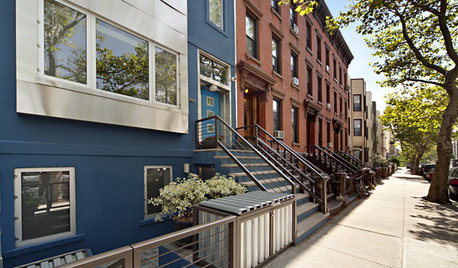Peach Tree Care in Spring
atramel
10 years ago
Related Stories

GARDENING GUIDESSpring Citrus Care Reaps Months of Sweet Rewards
Learn how to tend citrus trees in spring and ways to preserve their delicious fruit
Full Story
GARDENING GUIDESHow to Keep Your Trees Healthy
Ensure your trees’ vigor for years to come with these tips for protecting roots, watering effectively and more
Full Story
EDIBLE GARDENSHow to Grow Your Own Peaches and Nectarines
Make gardening a little sweeter with these juicy fruits, which you can eat after plucking or preserve for later
Full Story
HOLIDAYSHow to Care for Your Christmas Tree
Keep your tree looking lush until the last ornament is packed away with these tips for watering, using stands and more
Full Story
SPRING GARDENING7 Spectacular and Practical Spring-Flowering Trees
Put on a beauteous show in the garden with a landscape tree awash in flowers — just do your homework first
Full Story
FARM YOUR YARDIf You Have Room for Only One Fruit Tree ...
Juice up a small garden with one of these easier-care or worth-the-effort fruit trees for a mild climate
Full Story
DECORATING GUIDESThinking Spring: Blossoming Branches
Cherry, Peach and Apple Flowers Make Interiors Bloom
Full Story
GARDENING GUIDESPlant Black Cherry Trees for the Birds and Bees
Plant Prunus serotina in the Central and Eastern U.S. for spring flowers, interesting bark and beautiful fall color
Full Story
EDIBLE GARDENSGrow Plum Hybrids for Your Favorite Fruit Flavors
Plums are cozying up with apricots, peaches and even cherries — here’s how to grow these hybrids for the best aspects of each
Full Story
COMMUNITYWant a Cleaner, Safer Neighborhood? Show You Care
Our behavior strongly influences others, says a new study. Show neighbors you care about your street and watch them follow suit
Full StoryMore Discussions










Bradybb WA-Zone8
olpea
Related Professionals
Edmond Landscape Architects & Landscape Designers · Windham Landscape Architects & Landscape Designers · Carson Landscape Architects & Landscape Designers · Cary Landscape Architects & Landscape Designers · Ilchester Landscape Architects & Landscape Designers · Prairie Ridge Landscape Architects & Landscape Designers · Brookline Landscape Contractors · La Vista Landscape Contractors · Las Vegas Landscape Contractors · Manhattan Landscape Contractors · Oak Harbor Landscape Contractors · Waipahu Landscape Contractors · Wallingford Landscape Contractors · West Haverstraw Landscape Contractors · West Orange Landscape ContractorsatramelOriginal Author
atramelOriginal Author
eibren
atramelOriginal Author
alan haigh
alan haigh
atramelOriginal Author
alan haigh
olpea
drew51 SE MI Z5b/6a
alan haigh
alan haigh
Bradybb WA-Zone8
alan haigh
olpea
drew51 SE MI Z5b/6a
alan haigh
olpea
alan haigh
drew51 SE MI Z5b/6a
alan haigh
JoppaRich
iloveeskies